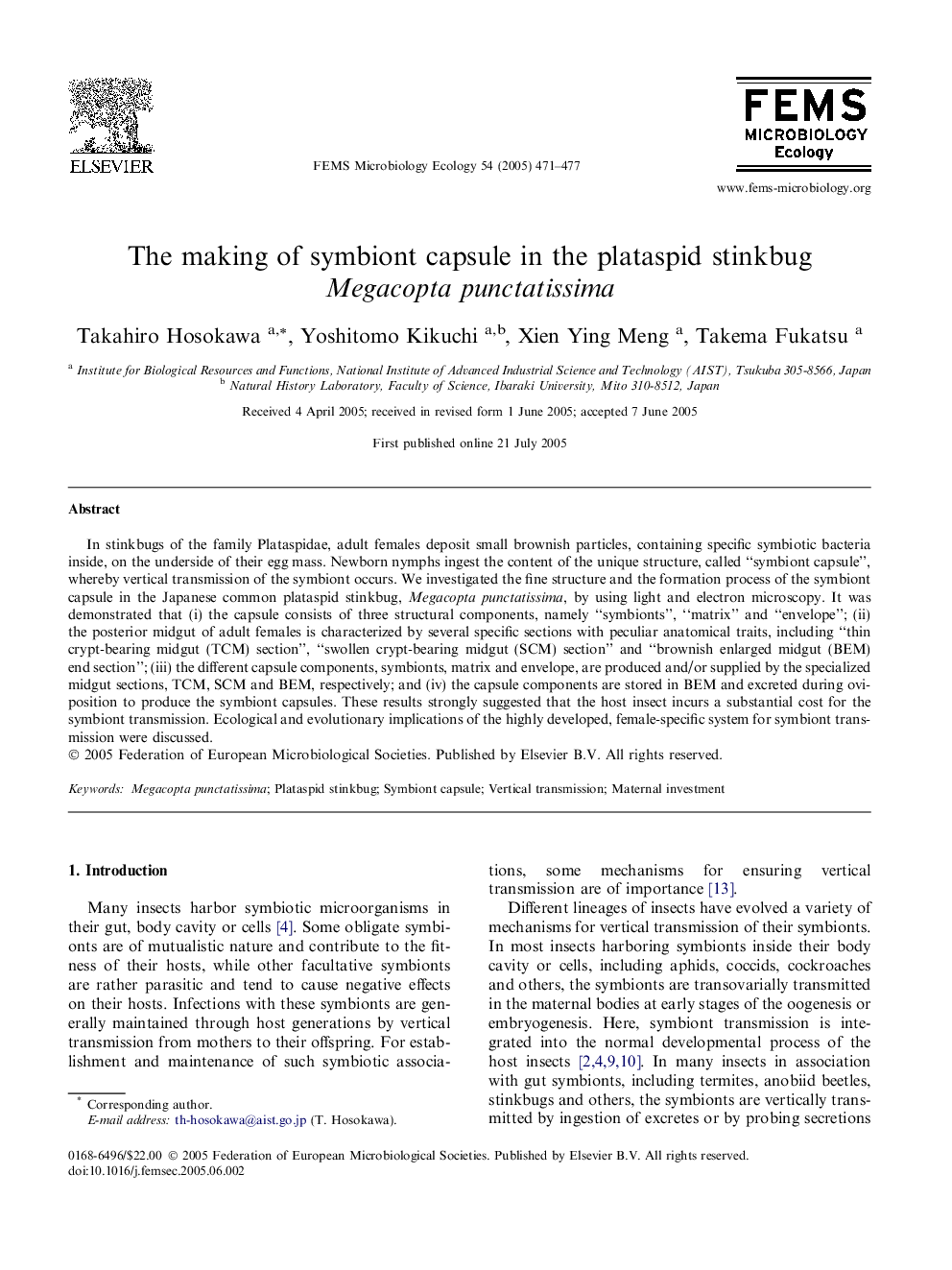| کد مقاله | کد نشریه | سال انتشار | مقاله انگلیسی | نسخه تمام متن |
|---|---|---|---|---|
| 9437623 | 1615784 | 2005 | 7 صفحه PDF | دانلود رایگان |
عنوان انگلیسی مقاله ISI
The making of symbiont capsule in the plataspid stinkbug Megacopta punctatissima
دانلود مقاله + سفارش ترجمه
دانلود مقاله ISI انگلیسی
رایگان برای ایرانیان
موضوعات مرتبط
علوم زیستی و بیوفناوری
علوم محیط زیست
بوم شناسی
پیش نمایش صفحه اول مقاله

چکیده انگلیسی
In stinkbugs of the family Plataspidae, adult females deposit small brownish particles, containing specific symbiotic bacteria inside, on the underside of their egg mass. Newborn nymphs ingest the content of the unique structure, called “symbiont capsule”, whereby vertical transmission of the symbiont occurs. We investigated the fine structure and the formation process of the symbiont capsule in the Japanese common plataspid stinkbug, Megacopta punctatissima, by using light and electron microscopy. It was demonstrated that (i) the capsule consists of three structural components, namely “symbionts”, “matrix” and “envelope”; (ii) the posterior midgut of adult females is characterized by several specific sections with peculiar anatomical traits, including “thin crypt-bearing midgut (TCM) section”, “swollen crypt-bearing midgut (SCM) section” and “brownish enlarged midgut (BEM) end section”; (iii) the different capsule components, symbionts, matrix and envelope, are produced and/or supplied by the specialized midgut sections, TCM, SCM and BEM, respectively; and (iv) the capsule components are stored in BEM and excreted during oviposition to produce the symbiont capsules. These results strongly suggested that the host insect incurs a substantial cost for the symbiont transmission. Ecological and evolutionary implications of the highly developed, female-specific system for symbiont transmission were discussed.
ناشر
Database: Elsevier - ScienceDirect (ساینس دایرکت)
Journal: FEMS Microbiology Ecology - Volume 54, Issue 3, November 2005, Pages 471-477
Journal: FEMS Microbiology Ecology - Volume 54, Issue 3, November 2005, Pages 471-477
نویسندگان
Takahiro Hosokawa, Yoshitomo Kikuchi, Xien Ying Meng, Takema Fukatsu,